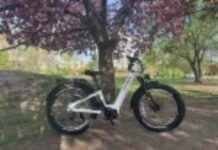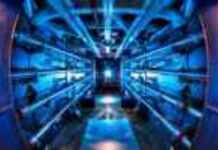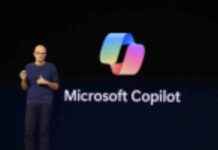Elon Musk dreams of transforming Tesla from a mere automaker into a cutting-edge AI company, leading the charge in developing self-driving cars. At the heart of this ambitious vision lies Dojo, Tesla’s custom supercomputer engineered to train its Full Self-Driving (FSD) neural networks. While FSD technology is not yet fully autonomous, Tesla believes that with the right combination of data, processing power, and training, it can achieve the elusive goal of true self-driving capabilities. As the automotive industry grapples with declining electric vehicle (EV) sales, investors are looking to Tesla’s advancements in autonomy for reassurance and innovation.
Unveiling Dojo: A Timeline of Tesla’s AI Chip Development
Dojo: From Concept to Reality
In 2019, Elon Musk provided the first glimpses of Dojo during Tesla’s Autonomy Day, where the company’s AI team showcased the technology behind Autopilot and Full Self-Driving. Musk teased Dojo as a supercomputer dedicated to AI training, underscoring Tesla’s commitment to integrating cutting-edge technology into its vehicles. This marked the beginning of a journey towards revolutionizing self-driving capabilities within the automotive industry.
As 2020 unfolded, Musk embarked on a roadshow to promote Dojo, emphasizing its pivotal role in processing vast amounts of video training data essential for FSD development. Throughout the year, Musk reiterated Tesla’s plans to launch the first version of Dojo, highlighting its potential to enhance self-driving capabilities significantly. By positioning Dojo as a cornerstone of Tesla’s AI strategy, the company set the stage for a technological breakthrough in autonomous driving.
In 2021, Tesla officially introduced Dojo to the world at its inaugural AI Day, a pivotal event designed to attract top engineering talent to bolster Tesla’s AI division. The unveiling of the D1 chip, intended to power the Dojo supercomputer in conjunction with Nvidia’s GPU, signaled a significant milestone in Tesla’s pursuit of AI-driven innovation. With a robust AI cluster housing 3,000 D1 chips, Tesla laid the groundwork for a transformative leap in neural network training capabilities.
Dojo’s Evolution and Future Prospects
Throughout 2022, Tesla showcased the progress of Dojo, unveiling the first Dojo cabinet for testing and load evaluation. By demonstrating the power of Dojo through real-world applications like generating AI-driven images, Tesla solidified its position as a trailblazer in AI technology. Setting ambitious targets for the completion of the Exapod cluster and scaling up Dojo operations, Tesla underscored its unwavering commitment to pushing the boundaries of AI innovation.
In 2023, Elon Musk characterized Dojo as a ‘long-shot bet’ with the potential to revolutionize AI training and drive down costs significantly. As Tesla ventured into offering Dojo as a service to other companies, the supercomputer emerged as a game-changer in the AI landscape. By integrating Dojo into its operational framework, Tesla aimed to establish itself as a leader in AI-driven solutions, propelling the company towards unparalleled success in the field of autonomous technology.
In 2024, Tesla unveiled plans to expand its AI capabilities with the development of Cortex, a massive AI training supercluster intended to tackle real-world AI challenges. While Dojo remained a critical component of Tesla’s AI infrastructure, the emergence of Cortex signaled a new chapter in Tesla’s relentless pursuit of AI excellence. As Musk showcased the monumental scale and capabilities of Cortex, Tesla solidified its position as an industry trailblazer, leading the charge in AI innovation.
While 2025 brought no updates on Dojo, Tesla’s deployment of Cortex at the Austin gigafactory marked a significant milestone in the company’s AI journey. With Cortex facilitating the rollout of FSD V13 and driving advancements in safety and comfort, Tesla continued to push the boundaries of AI technology. As Tesla’s AI-related capital expenditures soared to approximately $5 billion, the company’s unwavering commitment to AI innovation remained unwavering, setting the stage for future breakthroughs in autonomous driving technology.
This narrative, tracing the evolution of Tesla’s AI chip development from the inception of Dojo to the deployment of Cortex, encapsulates the company’s relentless pursuit of innovation and excellence in the realm of autonomous technology. As Tesla continues to redefine the automotive landscape with its cutting-edge AI solutions, the legacy of Dojo and Cortex stands as a testament to Tesla’s unwavering commitment to shaping the future of mobility.













